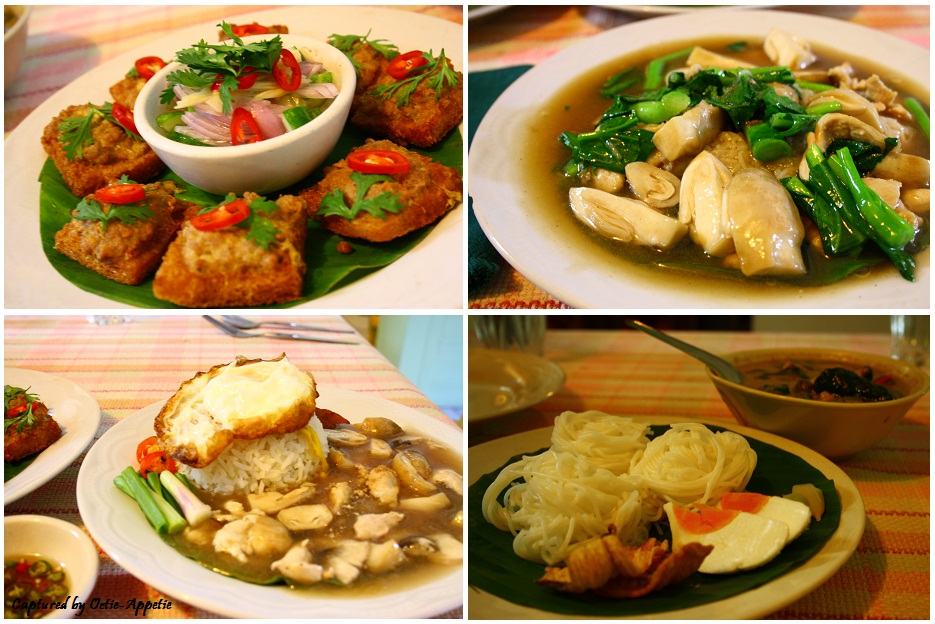

To prepare the noodles, if using rice noodles sheets. Squeeze dry and discard the stems, keep the water that was used for the mushrooms.ġ kilo (2.2 pound) wide rice noodles, separated (I substituted with rice noodle sheets for spring rolls)ĭark soy sauce or substitute with blackstrap molasses Immediately cool down the vegetables in cold water to avoid discoloration and to keep crisp.ĭried shitake mushroom (optional) Soak shiitake mushrooms in water until soften (about 20 minutes). Prepare the vegetables and cut as required. Vegetable: Such as broccoli, carrot, cabbage, baby corn, cauliflower and young collard greens etc.

Pour marinade over the meat add tapioca flour and baking soda mix well. In a medium bowl, mix sugar, oyster sauce, soy sauce, fish sauce, oil, maggi sauce and black pepper. It’s super convenient, as I must say it’s not everyday that we have time in our busy schedules to cook.1 pound pork or chicken, thinly sliced and cut into bite-sized pieces I love cooking dishes that can be made in big portions, stored, and made into something different. If you have any leftovers, you can also turn this gravy into another dish – Khao Nah Gai. The texture is achieved by thickening the soup with potato starch slurry and a bit of beaten egg. The addition of the fermented soy bean also adds an umami richness. In essence, this beautiful gravy is a soy sauce base with a hint of sweetness. The crucial bit would be taking the caramel to a dark stage but not completely burn it. The steps are to simply caramelise a bit of sugar on a hot wok, then toss the flat noodles to pick up the ‘wok hey’ (breath of the wok) then flavour with some salt and soy sauce. Like how we should marinate the meat, treating the noodles with the love it rightfully deserve is just as important! Caramelising the noodles allows for a beautiful ‘burnt wok’ aroma (I learnt that this is also an important dimension in a Chinese cuisine). This is the secret to a delicious noodles. Like many of my recipes, it works with your choice of protein.

So for best result, marinate the protein overnight or at least 30 minutes ahead of cooking. There’s nothing worse than biting into a dry, chewy and flavourless bit of meat. This is a technique that is often used in Asian cookery 😉. The corn starch in the recipe helps to tenderise the protein. Marinating the protein in advance will allow for maximum flavour penetration while also tenderising the meat. In fact, marinating the meat and caramelising the noodles will follow similar steps. You will find that most of the preparation of Rad Na is very similar to Pad See Ew.

Ingredients are cheap but very tasty and substantial at the same time, making it the popular choice amongst the worker people. The dishes are quick to make so they’re made to order on a hot wok mounted on the little street food carts. The addition of the starch helps with coating of the gravy on the noodles, just don’t over do it.īoth Rad Na and Pad See Ew are the more substantial selections of the street food options in Thailand. The texture is a debatable topic of this dish as I’ve heard some people describing it as ‘snot’ before – well, not for me. However, I feel that this can sometime be overly done which can make it gloopy. The gravy is thickened with potato starch and speckles of beaten egg giving it a silky luxurious mouthfeel. As with many fermented foods, the soy beans packs an umami punch to the whole dish, making it wonderfully addictive to eat. What makes the gravy sauce dressed on the flat rice noodles (similar to ho fun) unique is the aroma of the light fermented soy beans. Rad na Thai noodles is often sold together with its dry wok-fried counterpart, Pad See Ew. Rad Na – Thai fried rice noodles with pork loin and gravy. The flat rice noodles is tossed in hot wok and topped with flavourful gravy. If you’re a noodle lover, you MUST try this recipe.


 0 kommentar(er)
0 kommentar(er)
